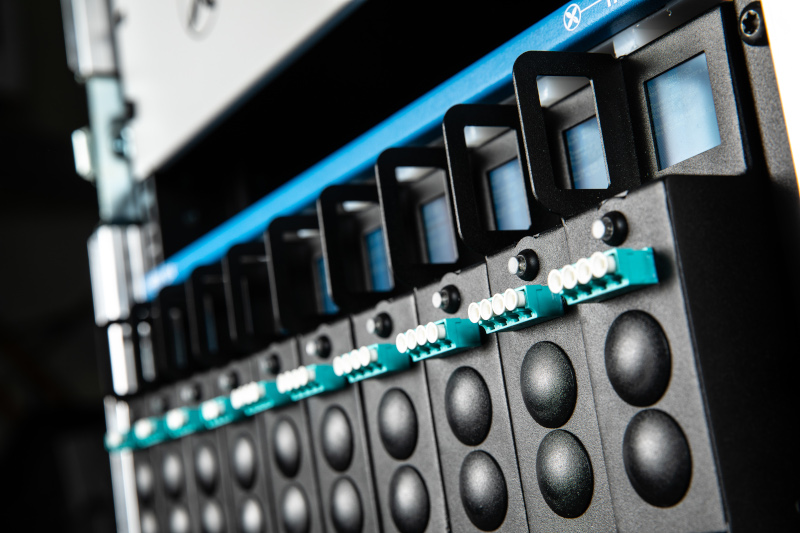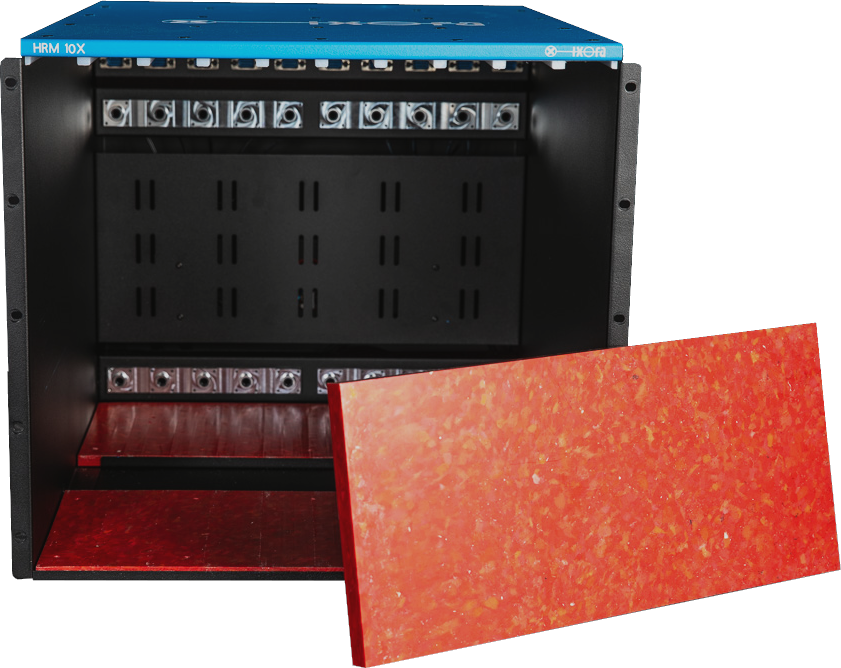Immersion cooling
We are proud to introduce our HRM-4 (Hypotherm Rack Mount), silent immersion cooling per individual server.
- Less energy without computer fans
- Less operational expenses
- Less energy on datacenter cooling
- Less capital expenses
- High quality (60°C) residual heat product
Introducing the HRM-4
- Immersion cooling cassettes
- Fits industry standard 19″-racks
- Hot-swappable I/O
- Suitable for district heating
- 4kW power per cassette – 16kW power per chassis
- Modular architecture
- Silent operation
- Inspired by Open Compute
4 individual cassettes
These cassettes hold up to 4kW in compute power together with their liquid. By carrying them using their convenient handles away from the data floor, maintenance can be performed without spilling liquids where they’re not wanted.
With each server in it’s own housing, filled with dielectric liquid, the whole cassettes are still movable. Less influence from the outside, easy to install and very flexible. The fact that the liquid won’t come out during transport also means other liquid can’t get in; you can easily transport the cassettes even in heavy rain.
The front interface includes USB3, VGA, Serial, front indication LEDs, Power & reset buttons and the usual connectivity options such as fiber and UTP.
Technical Specifications
- Dimensions: 934mm * 19″ * 13U (L x W x H)
- Weight: ~150 kg /~ 330 lbs
- Cooling capacity: 4kW per cassette, 16kW per chassis
- Number of cassettes: 4 cassettes per chassis
- Type cassettes: Closed, heat exchanger enclosed
- Compute format: E-ATX boards
- Temperature inlet: Up to 40°C / 104°F
- Temperature outlet: Up to 60°C / 140°F
- PUE: <1.04
- Power saving vs air cooling: Up to 50%
Cooling Liquid
- Circulation method: Natural convection, no pumps
- Liquid manufacturer: Compuzol IM2020
- Live time of liquid: ~10 years
Facility requirements
- Data center rack: Minimal 1200mm x 600mm (L x W)
- Rack weight capacity (3 chassis): ~510kg/1.124lbs
- Cooling loop requirements:
- Minimal 1.57bar/22.8psi
- Optimal 2.0bar/29.0psi
- Maximal 5.0bar/72.5psi
Features
- Mounted in existing 19” rack
- Connect to existing heat grid
- Easy to install
- Individual cassettes
- No liquid spilling on the floor
Monitoring and management
The individual displays per cassette provide a one-view status indication. Temperature, power usage, pressure and other critical information is constantly displayed here.
Manage your hardware remotely using industry standard SNMP, SSH and the webinterface, view statistics and secure what needs to be secure.
For those running larger scale serverfarms, it’s easy to include the HRM’s into your existing Building Management System (BMS) by using the SNMP. Both read-only and read-write are available. Using the traps corresponding with the cassettes you can monitor per cassette and even turn them on/off or power cycle them.


Circular inside
With an eye for detail, durability and usability. By using the best materials and components, the durability of the chassis and cassettes is guaranteed. Not only the energy can be reused for district heating, but the plastics used for guiding the cassettes is coming from beaches on Curaçao!
Climate challenge
Datacenters around the world are constantly growing and facing increasing power density, thus demanding new innovative cooling techniques to keep up with demand. With each new processor generation the power efficiency increases, but at the same time the size decreases; resulting in more power per square meter/foot. The desire for a Co2 neutral footprint requires alternative ways to keep the power utilization to a minimum.
The target is set to reach this goal before 2030, the clock is ticking. Showtime!
